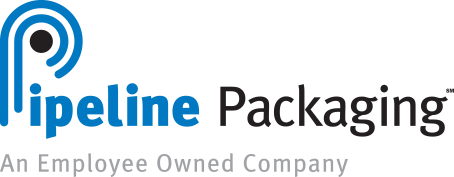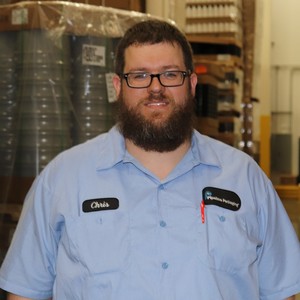Leaks are the silent specters that haunt the packaging industry. Those who have experienced them know what’s at stake — the exposure of hazardous materials, hefty fines from compliance agencies, and stalled operations. Even the potential for a leak is enough to leave those without previous experience searching for a supplier who can support their packaging quality control needs.
From small dribbles to full-on catastrophes, our packaging experts are sharing important maintenance tips and walking through the steps Pipeline takes to address leakages for customers.
It Starts with Asking the Right Questions

When leaks are discovered, the first priority becomes finding the source. Hazardous or not, it’s important to launch a thorough investigation that will determine the cause of the breach and find a lasting solution. As a trusted packaging partner, Pipeline Packaging leverages our connections to global manufacturers and suppliers as well as our industry knowledge to offer top-tier packaging quality control.
Based in Houston, Gary Watson has been an account manager with Pipeline Packaging for more than a decade. During his tenure, Watson has facilitated numerous investigations regarding leaks.
“Leaks are not uncommon in packaging,” he said. “At Pipeline, we have the resources to help you figure it out in an efficient and effective manner.”
Pipeline Packaging provides comprehensive packaging systems to a plethora of industries, spanning from personal health and beauty to industrial-strength chemicals. This ensures our team maintains a high level of industry knowledge when it comes to packaging quality control.
“When a leak happens, we go out and meet with the customer,” said Watson. “I ask questions about the current packaging process to find the right starting point for the investigation. Ultimately, though, our role is to make sure the customer knows Pipeline will be a trusted partner throughout the entire process. We’re there to alleviate any stress and confusion in the situation.”
Incorrect dimensions, material compatibility, assembly equipment — when it comes to packaging quality control, there’s often more to consider than the wrong closure.
“Following conversations about the current packaging system, my team will take a look at the faulty system,” he added. “We consider if the bottle has any defects, miscalculated neck thread measurements, improper gasket fitting, inaccurate torque range, or if there are any issues regarding heat induction or pressure-sensitive seals.”
In many packaging quality control cases, it can be as important to ask the right questions of the manufacturer as it is to ask the customer.
“We always refer to the manufacturer’s guidelines when investigating a leak,” said Watson. “First, we determine if the current assembly procedure follows the guidelines provided by the manufacturer. If we’re still unsure, we’ll bring the system to the manufacturer and ask if anything in the manufacturing process has changed recently.”
Watson shared an example to put Pipeline’s packaging quality control process into perspective.
“One of my customers started experiencing leakage with a tight head pail,” he said. “We visited the customer and sent the pail and closure to the manufacturer, who conducted another round of pressure tests and neck finish analysis. When the source of the leak could not be determined, we checked their torque wrench and found it was not calibrated to the correct range. After some adjustments on the customer’s equipment, the leak was completely fixed.”
Pipeline Packaging views this protocol of asking the right questions and chasing various rabbit trails as part of its responsibility to customers.
“It’s all about solving the mystery,” said Watson. “Our team is always there to walk customers through every step of packaging quality control. We know it’s our responsibility to keep our customers’ production lines moving safely along.”
Resolving the Issue
Once the root of a leak is discovered, it’s time to implement the solution. Like the example provided by Watson, some cases can be resolved with modifications to the assembly process, like the torque range. Other scenarios, however, can require customers to seek alternative components for their packaging systems.
Jenn Bodin has served customers as an account manager at Pipeline Packaging for more than 10 years. Like Watson, she’s walked alongside many customers, maneuvering packaging quality control. She detailed one of these leakage cases.
“My customer has been using a 2.5-gallon F-Style, level five, fluorinated can for a long time,” said Bodin. “Suddenly, the system, which contained insecticide product, started leaking.”
Immediately, Bodin and her customer began collaborating on the investigative procedure, which involved asking questions and connecting with the packaging manufacturer.
“We went back and forth with the manufacturer several times,” she said. “Initially, we thought it could be the fluorination, so we visited the facility to inspect the manufacturer’s fluorination process. With no evidence it was the lining, the manufacturer assisted by conducting several packaging quality control tests.”
As the evaluation continued, the team discovered the leak was caused by the cap.
“After making that discovery, we promptly started looking for new closures for the packaging system,” said Bodin.
When it comes to resolving issues in packaging quality control, Pipeline helps customers take advantage of its robust inventory — fueled by more than 400 global suppliers — to test and provide new solutions in a timely manner.
“The next step was to find a better solution,” said Bodin. “To certify the new cap would be compatible with this specific F-Style can, we carefully reviewed the specifications in the safety data sheet (SDS) and made sure the customer placed the system through a series of drop and pressure tests.”
Packaging quality control is about more than resolving the leak itself, though. It’s also a matter of avoiding the costly consequences of faulty packaging systems.
“In packaging, one incorrect decision can easily cost millions,” said Bodin. “Depending on the material, these situations can be high stakes. For instance, hazardous materials can endanger the health and safety of people and the environment or trigger hefty fines from the Department of Transportation (DOT). A widespread issue can also result in wasted product or costly production line pauses.”
Packaging Quality Control – It’s in our DNA
When you need help, you need more than someone who’s content just “going through the motions.” You need an active partner who’s willing to go above and beyond to not only diagnose the issue at hand, but provide a high-performing solution at a competitive price.
At Pipeline Packaging, our Good People at the Core maintain a culture of personal responsibility. We believe helping our customers succeed is a direct pipeline to our own success. As a result, every member of our team is devoted to packaging quality control, whether you’re struggling with leakage or discovering your perfect comprehensive packaging solution for the first time.
Achieving these goals means Pipeline Packaging is hardwired to provide top-tier counsel for packaging quality control. In fact, we maintain ISO 9001:2015 certification as a testament to our excellent service and commitment to continuous improvement. By upholding our promises, Pipeline continues to demonstrate its reliability to customers in any situation and at any point in time.
You don’t have to face packaging leaks alone. Our dedicated and resourceful team of packaging experts will assist you every step of the way, from evaluating your current system to meeting with the manufacturers behind your components. Contact us today to learn what packaging quality control could look like for your operation.


